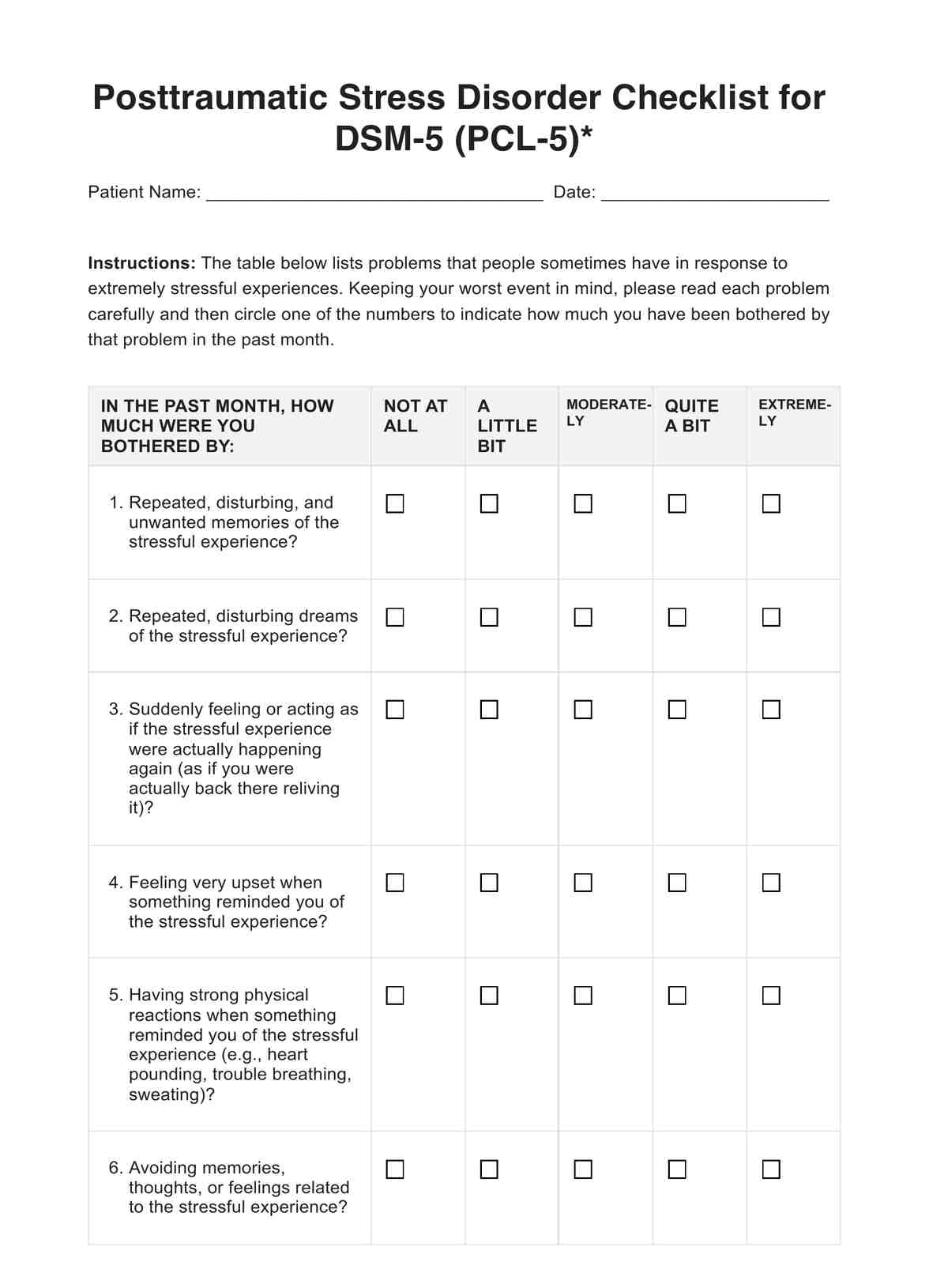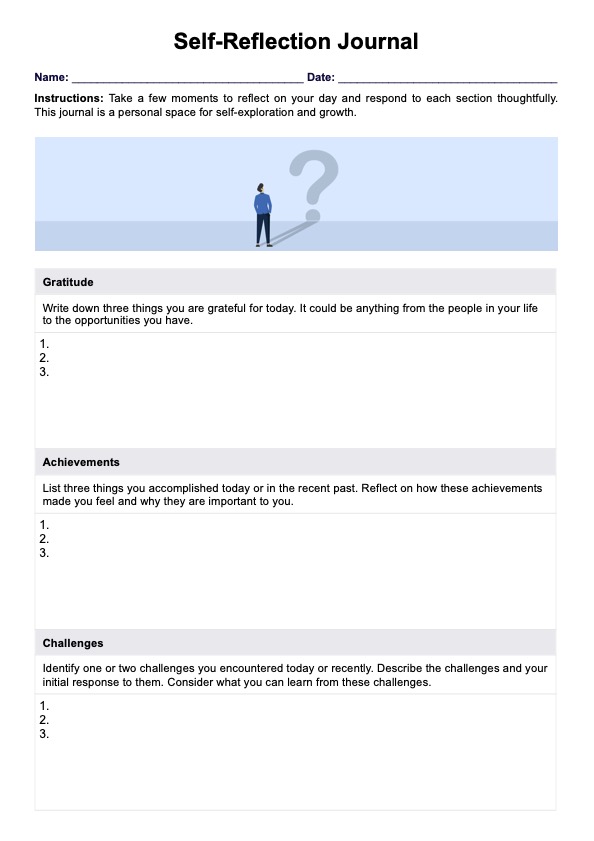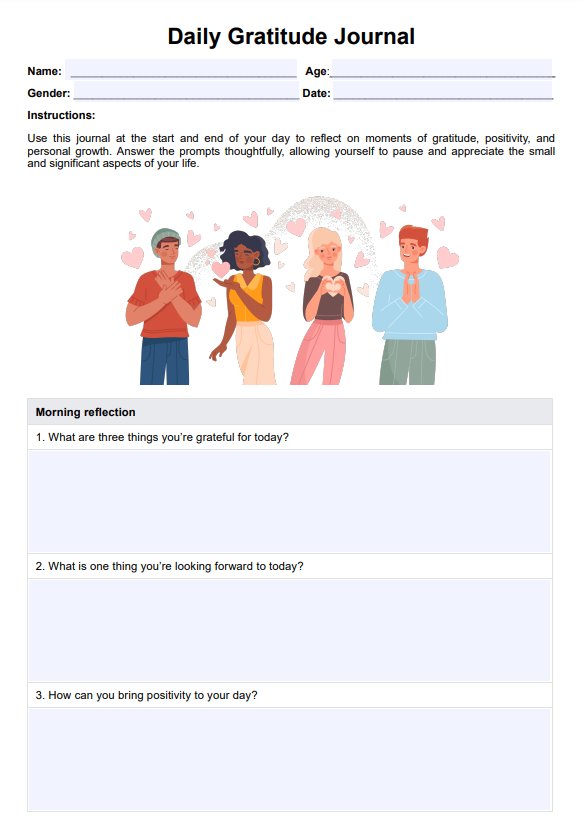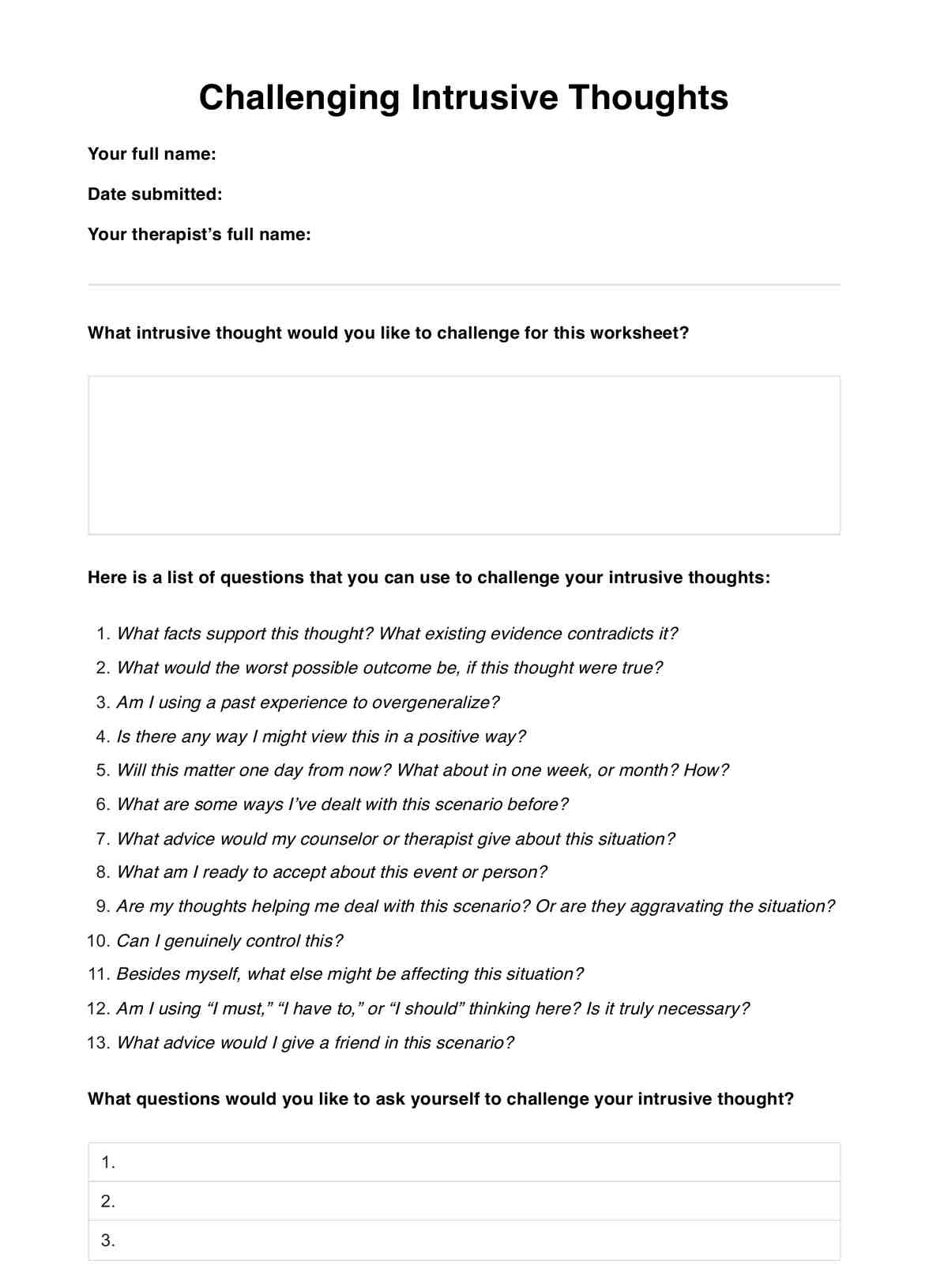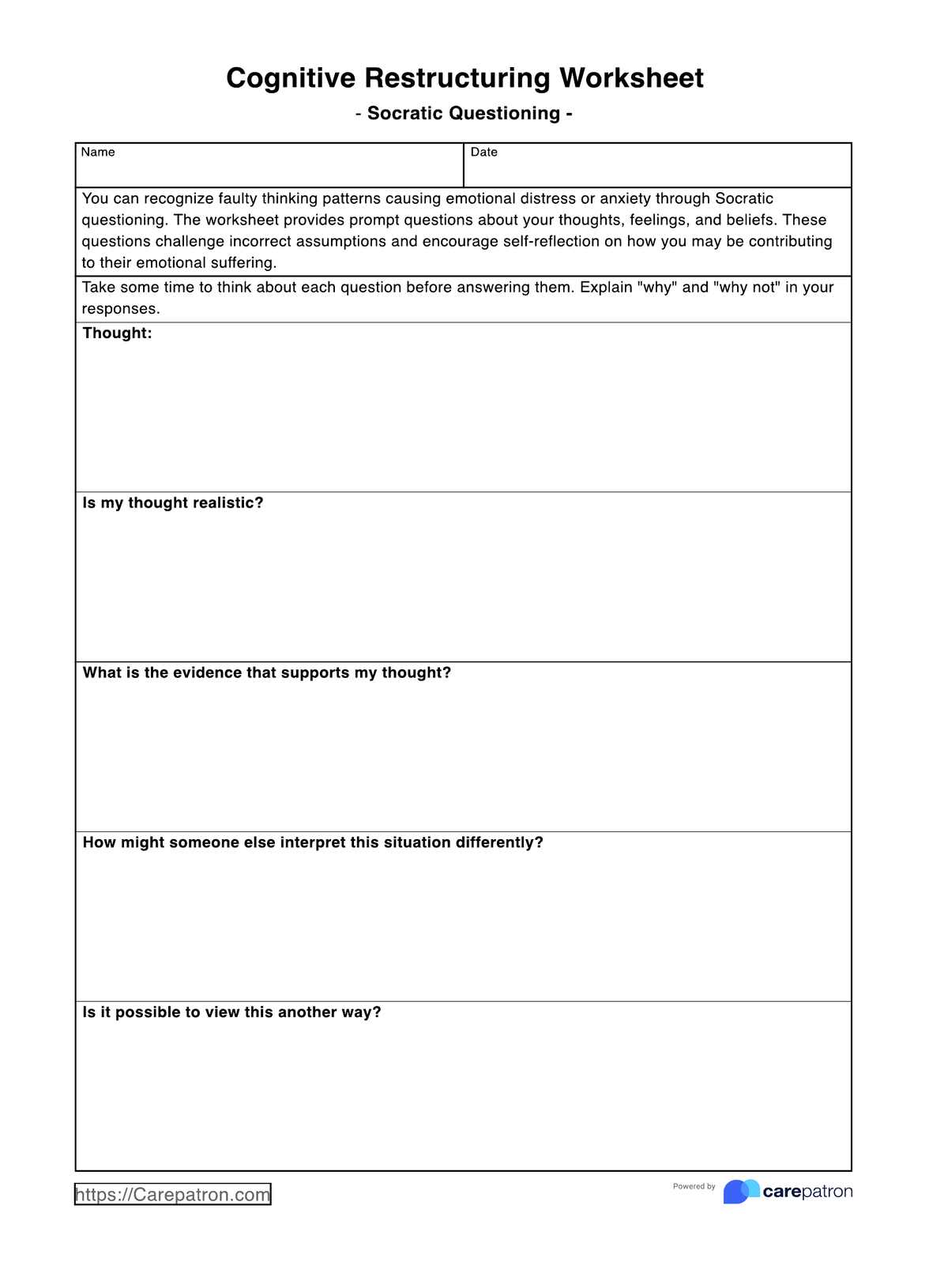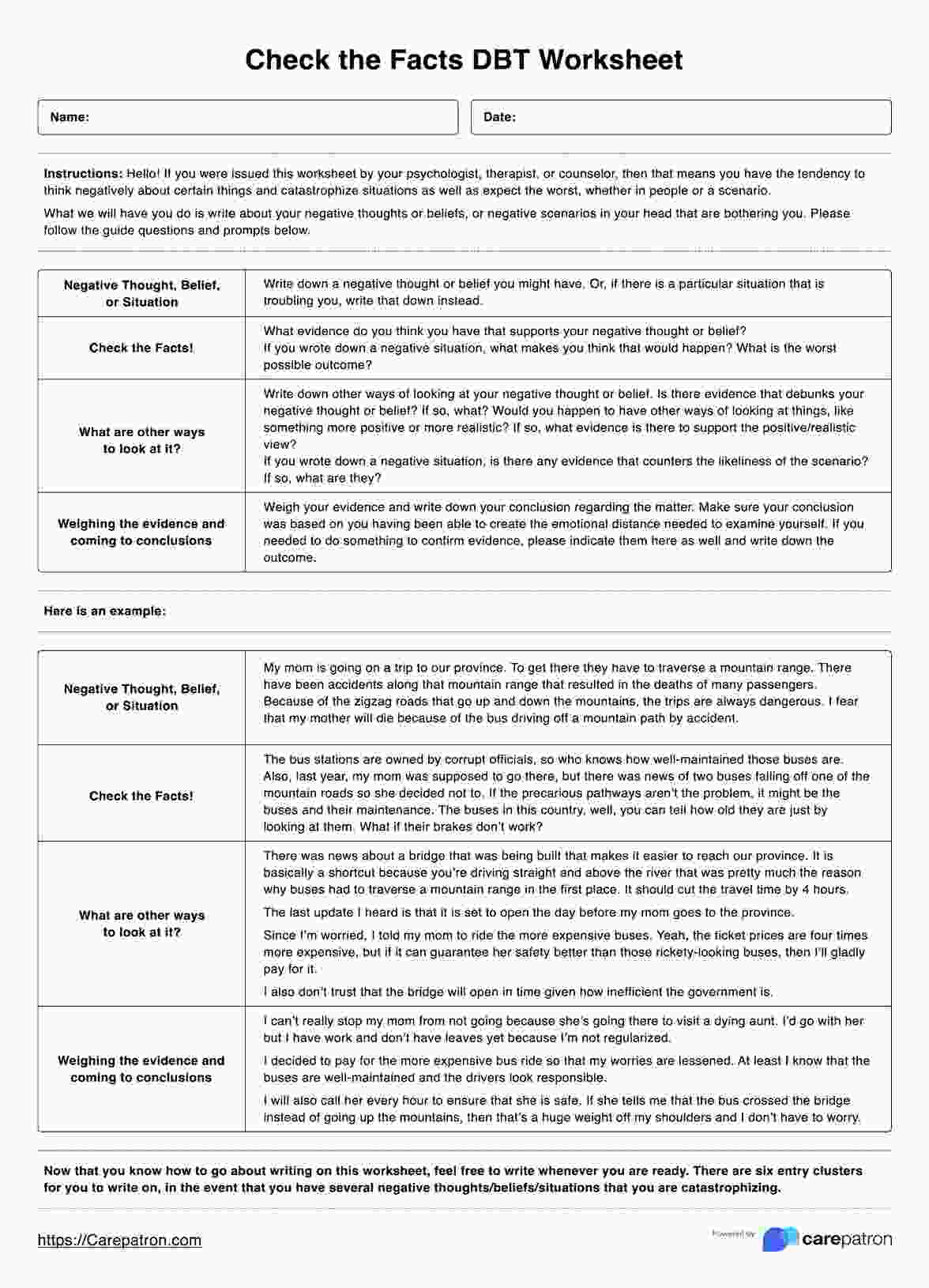Core Beliefs Inventory
Learn how the Core Beliefs Inventory can help your clients unearth their values. Download a free PDF template here.


What are core beliefs?
Core beliefs, or underlying or fundamental beliefs, are individuals' deeply rooted and often unconscious assumptions about themselves, others, and the world around them. These beliefs shape one's thoughts, feelings, behaviors, and overall perception of reality.
Psychologist Aaron Beck first introduced the concept of core beliefs in the 1960s as part of his cognitive model for depression. Since then, core beliefs have been recognized as a significant factor in the development and maintenance of various mental health disorders, including anxiety, posttraumatic stress disorder (PTSD), and personality disorders (Osmo et al., 2018).
Core beliefs are often formed during childhood and can be influenced by various factors, such as personal experiences, family dynamics, cultural beliefs, and social influences (MedicalNewsToday, n.d.). They are deeply ingrained and can be resistant to change without targeted intervention.
Individuals may hold positive or negative core beliefs, which can vary in intensity and specificity (Better Relationships, n.d.). Negative core beliefs are typically associated with low self-esteem, distorted thinking patterns, and maladaptive behaviors.
Core Beliefs Inventory Template
Core Beliefs Inventory Example
Types of core beliefs
Core beliefs can be categorized into different types, including self-related beliefs, others-related beliefs, and world-related beliefs. Here are these types of core beliefs in detail:
Self-related beliefs
These beliefs pertain to an individual's perception of themselves and their self-worth. They can include thoughts like "I am worthless" or "I am not good enough." These negative core beliefs can lead to low self-esteem and feelings of inadequacy.
Others-related beliefs
These are beliefs about others, including family members, friends, and authority figures. They can include thoughts like "Others will always let me down" or "I can't trust anyone." These beliefs may stem from past experiences and can lead to relationship difficulties.
World-related beliefs
These are beliefs about the world, including society, culture, and religious and spiritual beliefs. They can include thoughts like "The world is a dangerous place" or "There is no justice in the world." These beliefs can contribute to a pessimistic outlook and feelings of hopelessness.
The impact of core beliefs on behavior and self-perception
One's core beliefs can significantly influence one's behavior and how one views oneself. For example, a person with negative self-related beliefs may have low self-esteem and struggle with self-doubt, leading to behaviors such as avoiding challenges or being overly critical of themselves.
Similarly, other-related beliefs can affect one's relationships and social interactions. People with opposing views about others may have difficulty forming and maintaining healthy relationships.
World-related beliefs can also shape one's outlook on life and their sense of well-being. People who believe the world is inherently harmful may struggle with fear or hopelessness.
Moreover, core beliefs greatly affect one's mental health, particularly in cases of Research has shown that negative core beliefs can contribute to the development and maintenance of PTSD symptoms. Additionally, negative core beliefs have been linked to various forms of psychopathology, such as anxiety and depression.
The Core Beliefs Inventory
The Core Beliefs Inventory is a 100-item self-report measure designed to assess an individual's core beliefs across three domains: self-related, others-related, and world-related. Created by Matthew McKay, Ph.D., and Patrick Fanning in 1991 as part of the book Prisoners of Belief: Exposing and Changing Beliefs That Control Your Life, this inventory has been used in both clinical and non-clinical settings to assess the impact of core beliefs on an individual's functioning and well-being.
Individuals are instructed to circle either "T" for true or "F" for false for each statement presented, indicating whether they believe the statement to be mostly true or false. The statements cover a range of beliefs about self, others, and the world.
How to use the Core Belief Inventory template
Carepatron's free Core Beliefs Inventory form is lifted from Prisoners of Belief: Exposing and Changing Beliefs That Control Your Life by Matthew McKay, Ph.D., and Patrick Fanning. We made it easy to document scores, allowing you to identify areas for growth for your clients.
Here's how to use the template:
Step 1: Download the inventory
Access the Core Beliefs Inventory using this page's link or the Carepatron app. You may also get a copy from our resources library, which offers templates like the CBT and core beliefs worksheets.
Step 2: Provide your client with a copy
You can give your client a printed copy of the inventory or have them complete it electronically. Please explain why you use this tool and how their responses will be used in therapy.
Step 3: Score the inventory
Once your client has completed the inventory, score each item by assigning 1 point for every true response (T) and 1 point for every false response (F). Add up the total score for each section and tally it at the bottom of the page.
Step 4: Discuss the results with your client
Use the scores to identify negative core beliefs that may impact your client's well-being or functioning. Discuss these beliefs and help them explore their underlying assumptions and origins.
Scoring and interpreting the results
Scoring the Core Beliefs Inventory involves assessing your client's beliefs in ten critical areas of life. Each area corresponds to a fundamental aspect of personal well-being, and the scoring system helps you quantify the strength of your client's beliefs in each category.
The ten categories are Value, Security, Performance, Control, Love, Autonomy, Justice, Belonging, Others, and Standards. Once you have completed the inventory with your client, you can plot their scores on the template' to get a quick visual overview of their core beliefs.
A higher score in a category indicates a stronger and more rigid belief in that area. This can help identify areas where your client may struggle or experience distress due to their beliefs.
The Core Beliefs Inventory is not a diagnostic tool and should be used with other assessments and clinical judgment.
References
Core Beliefs Inventory. (2020). http://www.annavelychko.com/wp-content/uploads/2020/05/Core-Beliefs-Inventory.pdf
Better Relationships. (n.d.). Core Beliefs & Self-Acceptance.
Osmo, F., Duran, V., Wenzel, A., Reis de Oliveira, I., Nepomuceno, S., Madeira, M., & Menezes, I. (2018). The Negative Core Beliefs Inventory: Development and Psychometric Properties. Journal of Cognitive Psychotherapy, 32(1), 67. https://doi.org/10.1891/0889-8391.32.1.67
McKay, M., & Fanning, P. (1991). Prisoners of Belief: Exposing and Changing Beliefs That Control Your Life—New Harbinger Publications.
MedicalNewsToday. (n.d.). Core beliefs. https://www.medicalnewstoday.com/articles/core-beliefs
Commonly asked questions
In a clinical setting, the Core Beliefs Inventory can be used as a tool to identify negative underlying beliefs that may be contributing to a patient's mental health issues. The inventory helps to identify these core beliefs so they can be addressed during cognitive behavior therapy or other forms of treatment.
In cognitive therapy, the Negative Core Beliefs Inventory is crucial for identifying and understanding a patient's underlying negative beliefs. This brief measure provides insights into the assumptive world developed by the patient, which can often be the root cause of their distress or psychological disorders.
The Negative Core Beliefs Inventory or Core Beliefs Inventory acknowledges the significant role that religious and spiritual beliefs play in an individual's worldview. It includes questions designed to explore these areas, understanding that they can often form an essential part of a person's core beliefs. Thus, this inventory provides a comprehensive understanding of the patient's belief system, which is crucial for effective therapy.


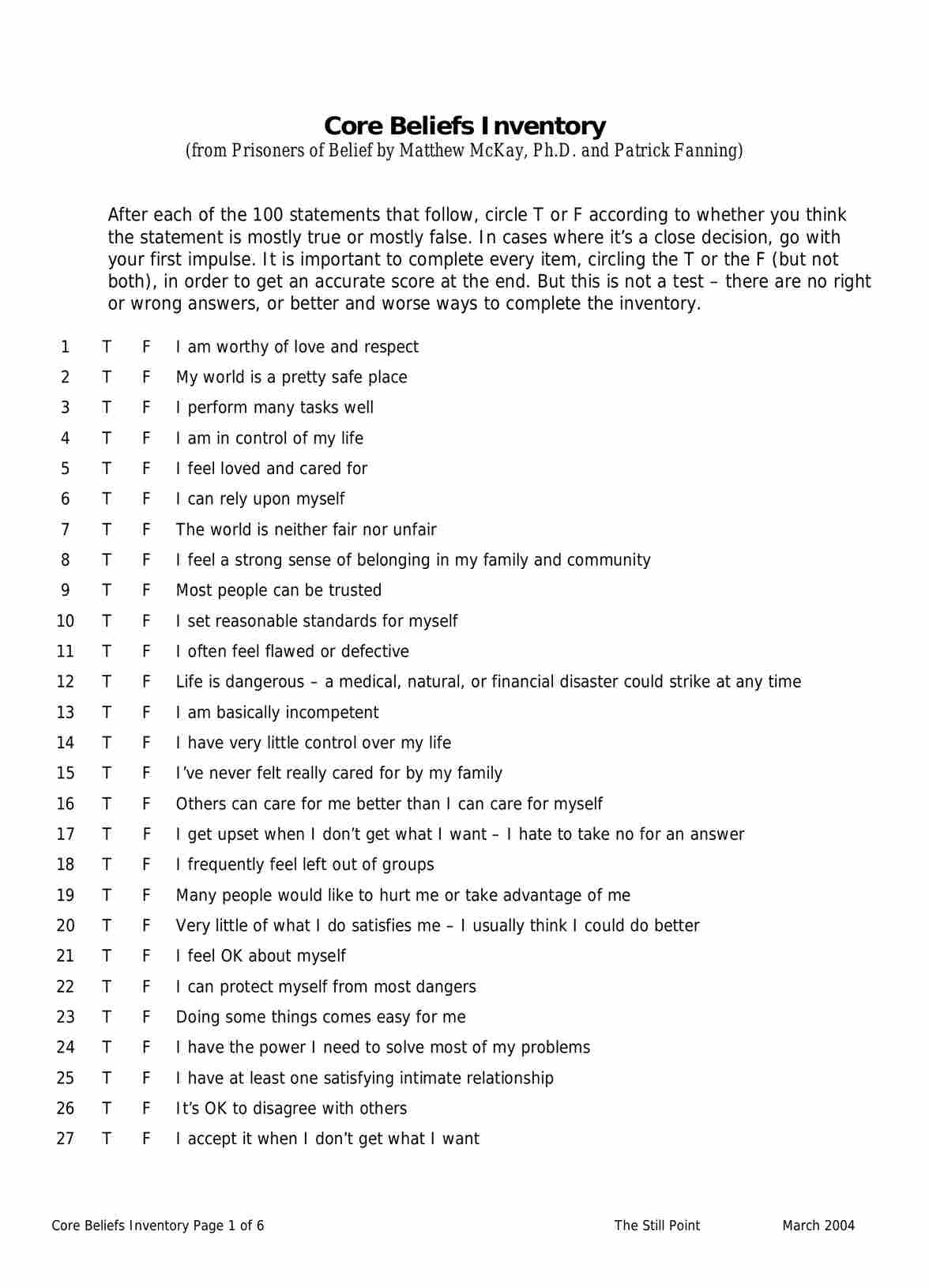
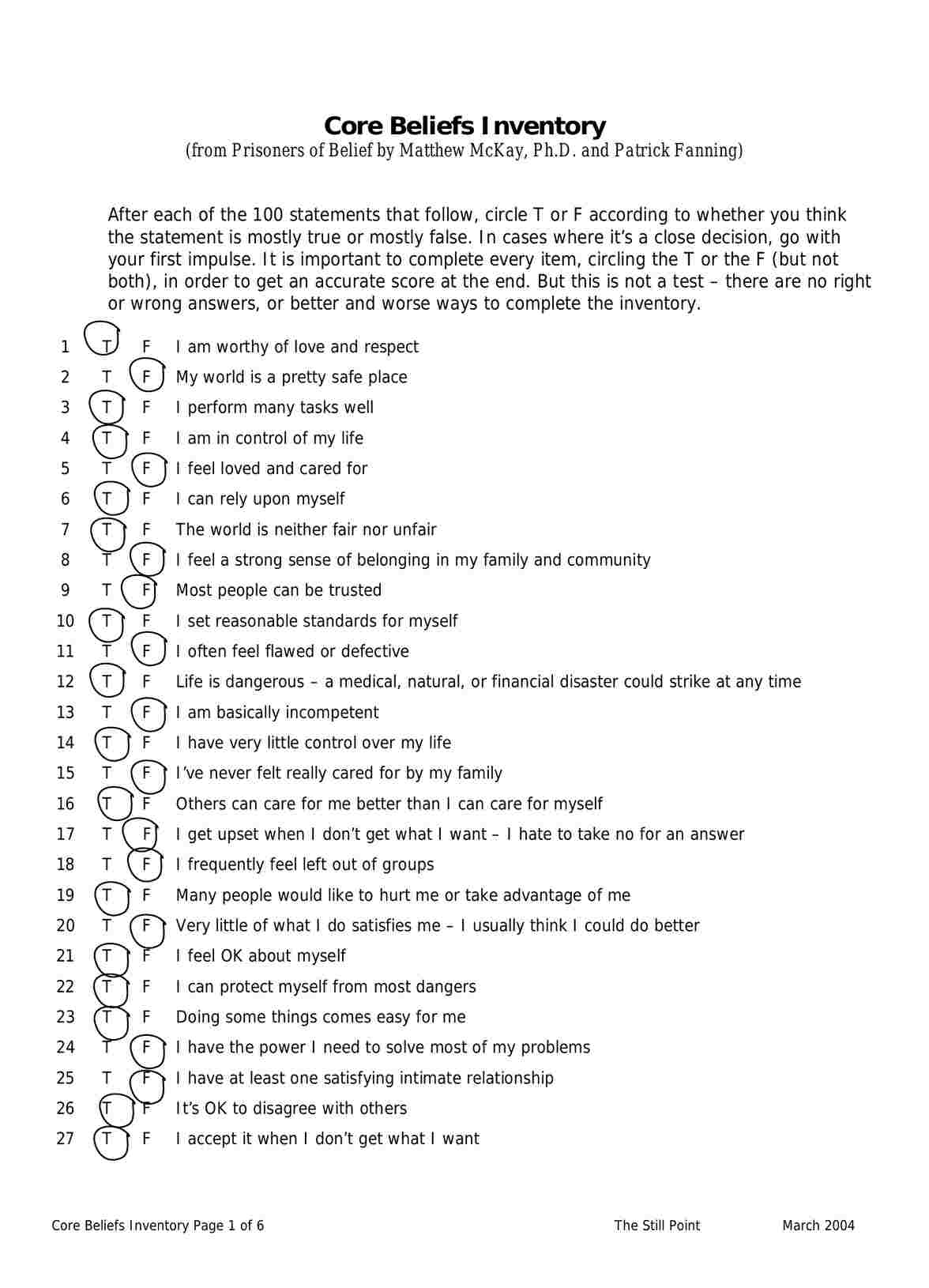

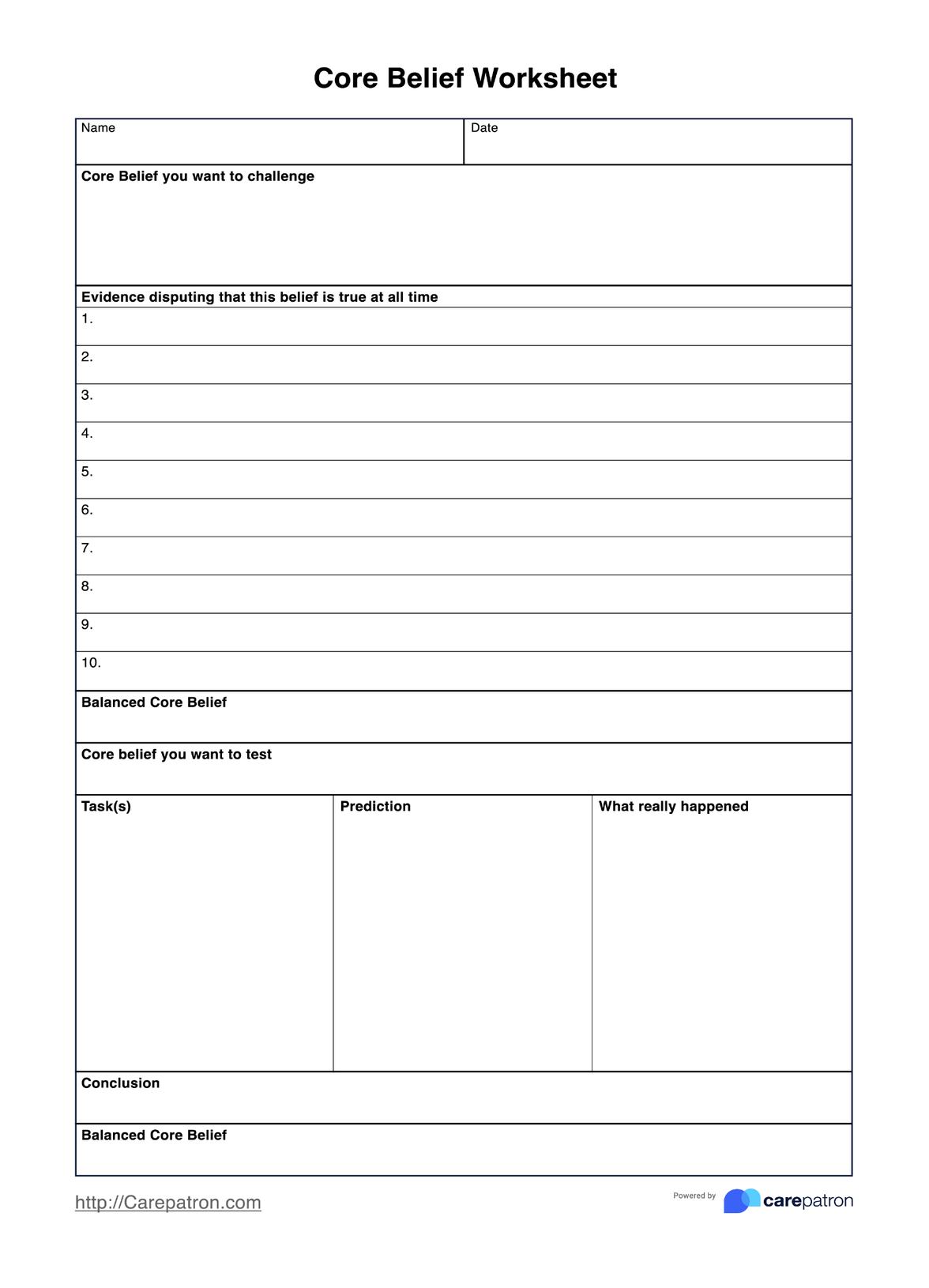
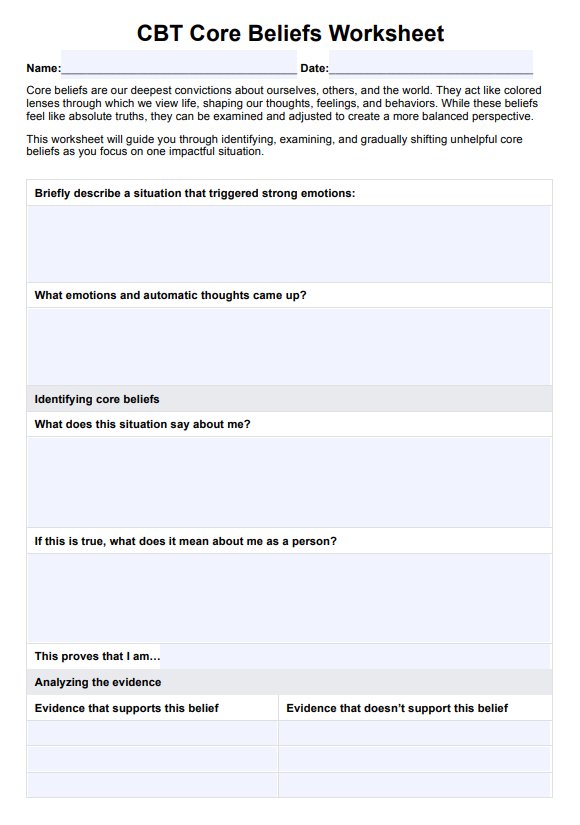
















-template.jpg)



















































































